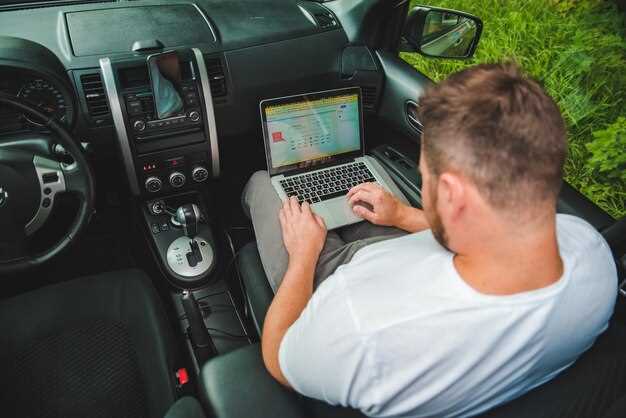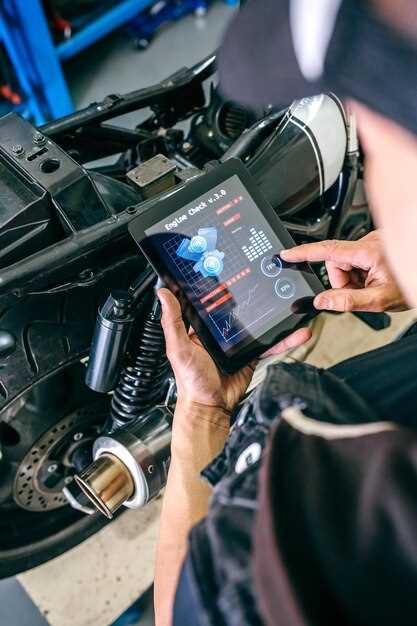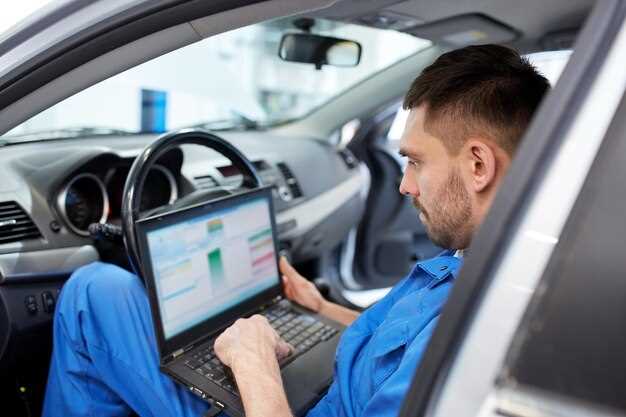
In the fast-paced world of race cars, every fraction of a second counts. The ability to gather and analyze data is crucial for improving performance and gaining a competitive edge on the track. One of the most effective ways to achieve this is by setting up a telemetry system using a data logger. This guide will take you step-by-step through the process of integrating a data logger into your race car, empowering you to make informed decisions based on accurate telemetry information.
A data logger collects various parameters related to your car’s performance, such as speed, RPM, temperature, and tire pressure, allowing you to understand how different factors influence your racing dynamics. By harnessing this invaluable data, you can fine-tune your setup and strategy, ultimately leading to quicker lap times and better overall results. This article aims to demystify the setup process and provide practical insights to ensure you have the right tools and knowledge to maximize your racing capabilities.
Before diving into the installation and configuration of your data logger, it’s essential to recognize the significance of telemetry in motorsports. Real-time data transmission enables drivers and engineers to monitor vehicle performance and make instant adjustments, enhancing both safety and competitiveness. Understanding how to utilize this technology effectively is fundamental for anyone serious about racing.
Selecting the Right Data Logger for Your Needs
When it comes to race performance, having the right data logger is crucial for optimizing your vehicle’s capabilities. The selection process should focus on your specific racing discipline and the types of data you need to collect for effective analysis. Understanding these requirements is key to making an informed decision.
Firstly, consider the data types you wish to log. Common parameters include vehicle speed, engine RPM, throttle position, temperature, and suspension travel. Advanced data logging systems offer additional capabilities such as tire pressure monitoring and GPS tracking. Determine which metrics are essential for your race strategy, as this will help narrow down your options.
Next, evaluate the compatibility of the data logger with your race car. Ensure that the logger can interface seamlessly with existing sensors and systems in your vehicle. Compatibility with various telemetry systems can add significant value, allowing for real-time data transfer and analysis during races.
Another factor to consider is the data logging frequency. High-frequency logging is essential for capturing rapid changes in performance, particularly during high-speed maneuvers. Ensure the data logger you choose can handle the speed of data collection required for your specific racing events.
Additionally, assess the usability of the data logger interface. A user-friendly interface can make it easier to configure settings and view data during and after racing sessions. Look for systems that offer intuitive software for data analysis, allowing you to make quick and informed decisions based on the logged data.
Lastly, factor in your budget. Data loggers come in a wide range of prices depending on their features and capabilities. While it may be tempting to opt for a budget model, investing in a high-quality data logger can provide insights that lead to better performance on the track.
In summary, selecting the right data logger involves careful consideration of your specific data needs, compatibility with your race car, logging frequency, usability, and budget. By addressing these factors, you can ensure that your data logging solution effectively contributes to improving your race performance.
Installing Sensors for Accurate Data Collection
To ensure effective telemetry and logging in your race car, the installation of high-quality sensors is crucial. These sensors will collect data from various systems and components, providing insights that can enhance performance and inform modifications.
Start by identifying the key parameters you wish to monitor, such as engine temperature, tire pressure, and fuel flow. Once you have determined the critical data points, select sensors that are known for their precision and reliability in automotive applications. For instance, thermocouples are widely used for temperature monitoring, while pressure transducers are ideal for tire pressure readings.
When installing the sensors, proper placement is essential. Ensure that each sensor is positioned where it can accurately capture the data without interference from other components. For example, place temperature sensors near the engine but away from exhaust heat sources. Additionally, use secure mounting solutions to prevent sensor movement during high-speed laps.
After installation, establish a connection between the sensors and the data logger. Follow the manufacturer’s instructions to wire the sensors correctly, ensuring that you use appropriate connectors and resistances. This practice helps minimize signal noise and ensures accurate data transmission.
Once the sensors are connected, perform calibration to verify that each unit provides correct readings. Calibration should be done regularly to maintain accuracy over time, especially after any significant changes in the car’s setup.
Finally, test the entire system under race conditions to ensure that data logging works seamlessly. Review the telemetry after the race to identify areas for improvement in both the data acquisition process and car performance. Properly installed and functioning sensors are indispensable for precise data collection and analysis, ultimately aiding in your racing success.
Connecting the Data Logger to Your Race Car’s Systems

Establishing a reliable connection between your data logger and your race car’s systems is crucial for effective data logging. This process involves several key steps to ensure accurate data collection during races.
- Identify Key Systems: Determine which systems you want to log data from. Common sources include:
- Engine parameters (RPM, fuel pressure, temperature)
- Suspension data (shock absorber position, ride height)
- Brake performance (brake temperatures, pressure)
- Tire pressure and temperature
- Select Compatible Sensors: Ensure that the sensors you use are compatible with your data logger. Consider the following:
- Sensor range must match your expected data values
- Output type (analog vs. digital) should be supported by the logger
- Wiring and connector types should be compatible
- Wiring the Data Logger: Connect the data logger to the selected sensors. Follow these steps:
- Refer to the data logger’s manual for wiring diagrams.
- Use quality connectors to secure wiring and minimize signal loss.
- Avoid long runs of wiring which may introduce noise into the data.
- Establish Communication: Set up communication between the data logger and the race car’s onboard systems. This may include:
- Configuring CAN bus settings if using digital sensors.
- Setting baud rates for data transfer efficiency.
- Testing signal integrity to ensure that data is accurately transmitted.
- Testing the Setup: Before heading to the track, conduct thorough tests:
- Power on the race car and verify that the data logger activates correctly.
- Monitor live data feeds to ensure all systems are logging as expected.
- Use simulation modes if available to test logging without driving.
- Data Analysis: Once the logger is connected and tested, plan for data analysis:
- Download and review logged data after practice or races.
- Compare performance metrics to identify areas for improvement.
- Adjust car settings based on data insights for optimal race performance.
By following these steps, you can effectively connect your data logger to your race car’s systems, leading to valuable insights that enhance your racing strategy and performance.
Configuring Data Logging Parameters for Optimal Performance

When setting up a data logger for your race car, configuring the data logging parameters is crucial for obtaining accurate and actionable telemetry. This process involves specifying which data channels to monitor, the frequency of data collection, and the type of data to record.
Selecting Data Channels: Identify the key data points essential for race performance. Common parameters include engine RPM, throttle position, brake pressure, tire temperature, and suspension movement. Focus on quantitative measurements that deliver insights about your car’s handling and efficiency on the track.
Data Collection Frequency: The rate at which data is logged can significantly influence the quality of telemetry. Higher frequencies capture more detail, which can be critical during high-speed maneuvers. However, balance this with the logger’s capacity to avoid data loss. For most racing scenarios, a collection frequency of 10 Hz to 100 Hz is typically effective.
Data Types: Decide between raw data and processed data. Raw data offers granular detail, while processed data provides a more immediate overview of performance trends. Both types can be beneficial–raw data for in-depth analysis post-race and processed data for real-time decision-making during the race.
Calibration and Accuracy: Ensure that all sensors and components of your data logging system are correctly calibrated. Accurate telemetry is imperative for making informed adjustments to your setup. Conduct regular checks to maintain the integrity of your data.
Storage Solutions: Choose appropriate storage solutions that can handle high volumes of data without dumping or corruption. Consider how much telemetry data you need to store during practice sessions and races. Make sure your data logger has sufficient memory and transfer capabilities.
Review and Adjust: Post-race analysis is vital. Review the logged data carefully to evaluate performance. Use the insights gained to fine-tune your data logging parameters for future races, adapting to changes in track conditions, vehicle dynamics, and driver feedback.
By meticulously configuring these data logging parameters, you equip yourself with the necessary tools to enhance performance and make well-informed decisions on your race day.
Analyzing Telemetry Data After Race Sessions
After logging data during your race sessions, the next crucial step is analyzing the telemetry data. This process allows you to gain insights into your car’s performance, driving style, and areas for improvement. Proper analysis can lead to optimized lap times and a better understanding of the vehicle’s dynamics.
The first step in analyzing telemetry data is to download the recorded logs onto your computer. Utilize software that can interpret the data logs, making it easier to visualize the information. Most data loggers come with proprietary software, but popular alternatives exist that support multiple data logging formats.
When viewing the telemetry data, focus on key metrics such as speed, throttle position, brake pressure, and lateral G-forces. These metrics can be plotted against time or distance to identify patterns in your race performance. A comprehensive analysis should help you answer critical questions like: Where did you lose time compared to your competitors? How did tire performance affect your lap times?
| Metric | Importance |
|---|---|
| Speed | Indicates how well you are utilizing the car’s potential throughout the circuit. |
| Throttle Position | Helps analyze acceleration phases and identify areas of improvement in power application. |
| Brake Pressure | Essential for understanding braking points and optimizing deceleration for turn-entry speed. |
| Lateral G-Forces | Provides insight into cornering capabilities and car stability during turns. |
Comparing your telemetry data against previous sessions or against competitors can unveil trends in your performance. Look for discrepancies in throttle application or braking points that might indicate inconsistencies in your driving technique. This analysis also allows for a thorough review of how vehicle modifications impact performance metrics over time.
Finally, use the insights gathered from your telemetry data to inform your practice sessions and race strategies. By systematically addressing the identified weaknesses, you can enhance your overall performance, leading to faster lap times and improved competitiveness on the track.
Troubleshooting Common Data Logging Issues
Setting up a data logger in your race car can greatly enhance your understanding of performance metrics. However, you may encounter some issues during the logging process. Here are common problems and their respective solutions to help you get back on track.
-
Data Logger Not Turning On
- Check the power supply connections.
- Ensure that the battery is charged and functioning.
- Inspect the wiring for any signs of damage or corrosion.
-
No Data Being Recorded
- Verify the settings on the data logger to make sure logging is enabled.
- Ensure that the memory card has enough available space for data storage.
- Check the sensor connections to confirm they’re securely attached and functioning.
-
Data Appears Inaccurate
- Inspect the calibration of the sensors used for logging.
- Cross-check the data against other known values to identify discrepancies.
- Ensure that environmental factors, like temperature, are not affecting sensor accuracy.
-
Data Logger Freezing or Crashing
- Update the firmware of your data logger to the latest version.
- Check for overheating issues in the unit during use.
- Reduce the number of active channels if the device is overloaded.
-
Logged Data Not Downloading to Computer
- Ensure the data logger is properly connected to the computer via USB or appropriate interface.
- Verify that the necessary software for data downloading is installed and up-to-date.
- Try using a different cable or USB port to rule out connection issues.
Regular maintenance and occasional checks can further prevent these issues from arising. By understanding common problems and implementing these troubleshooting tips, you can ensure your data logging setup works effectively during races.




